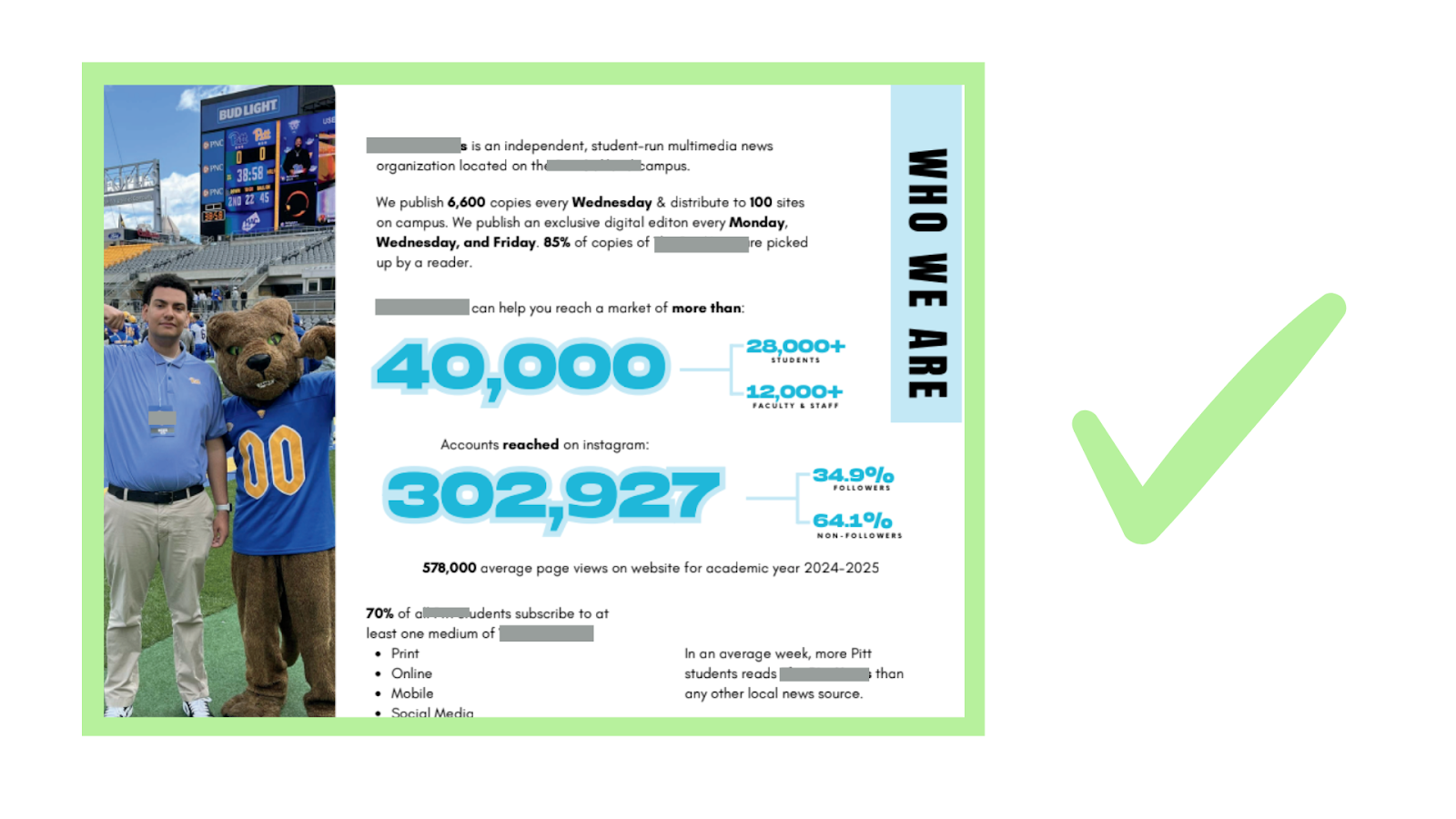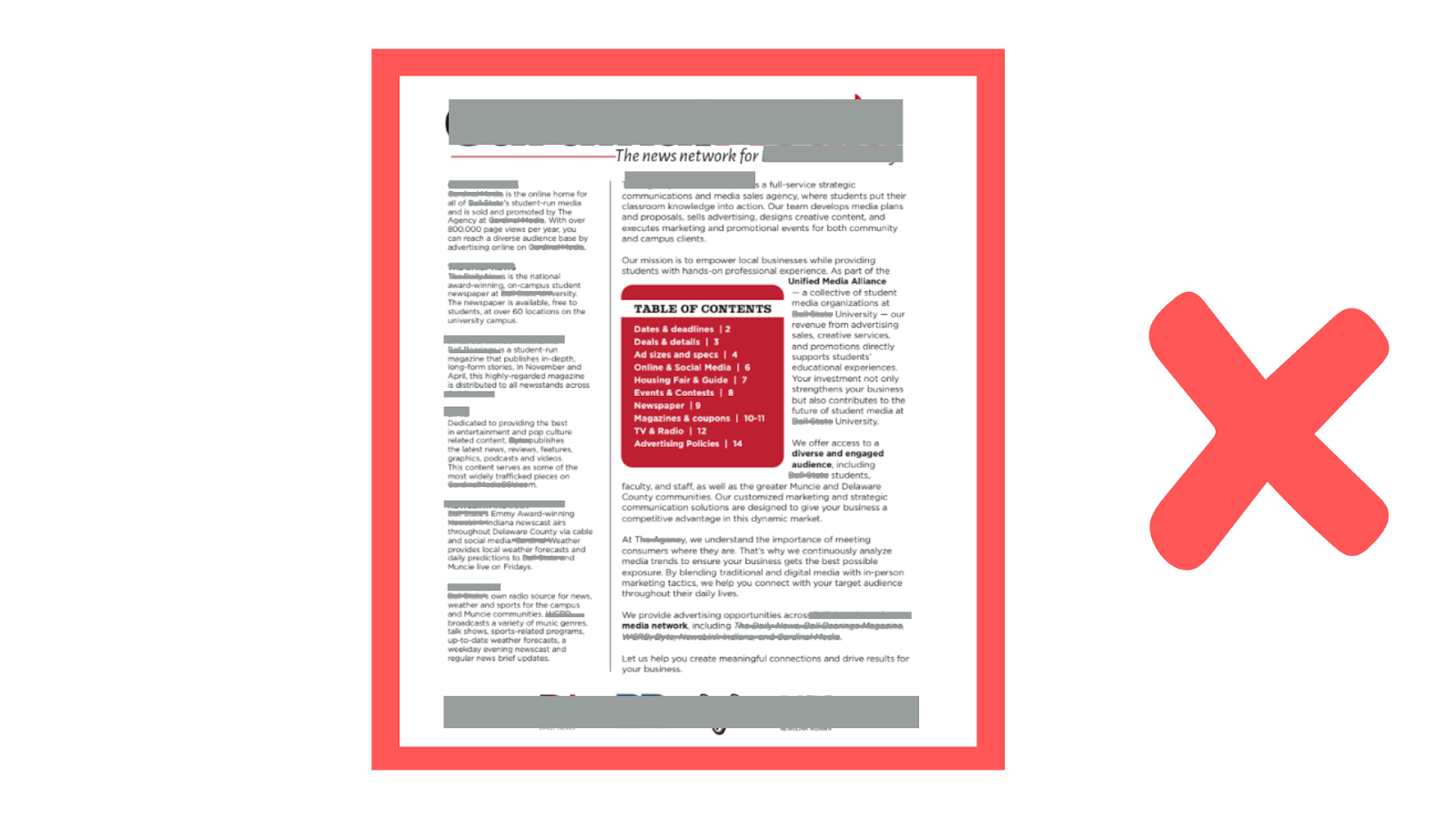
Learn more about common pitfalls in creating a media kit and how to avoid them.
A media kit is a publication's way to communicate why an advertiser should advertise with their organization. It communicates the purpose and value of advertising with their publication and gives the advertiser all the information that they need to make a purchasing decision.
Most student media publications already have a media kit on hand to share with their advertisers and prospective clients. But let’s face it, not all media kits are perfect.
Here are a few reasons why your media kit might be falling short.
Without certain details, the advertiser will likely have questions or walk away without asking them.
Your media kit should include:
This Media Kit Must-Haves checklist outlines what should be included in each section.
Set some time aside before the start of each semester to review your media kit and make any necessary updates or edits. Keep these questions in mind:
Run through your must-have list and start adding what’s missing. Or, strike a red line through unneeded details.
With attention spans getting shorter by the day, it is ideal for your media kit to be scannable and easily digestible — we recommend 5 minutes or less.
Where text is commonly too long:

It’s all about organization and design layout!
If your page has a lot of analytics and data points...
➡️ Implement design elements that highlight the data instead of writing it all out in paragraphs.
If your “about us” story or product description is too long...
➡️ Condense it into what they really need to know. Your sales rep can tell the rest!
Aim to keep the entire media kit under 8 pages. If you find yourself going over that, evaluate the information you have included thus far.

Along with being too text heavy, it’s easy to get caught up in the fluff. Yes,we want the advertiser to know everything about our publication and products. But we want to give them the most important facts.
The more wordy it is, the more confusing and uninteresting it becomes to an advertiser trying to understand exactly what they need to know to make their decision.

Simplify the content:
Have someone else read your media kit and provide feedback. (Even better if it is a peer who is not in student media!)

One of the most common struggles with student media ad teams is the follow-through, closing the deal. If their next steps after reviewing the media kit are not clear, there is room for the advertiser to ghost you. Your call to action in your media kit can help move the sales cycle forward to scheduling a call, booking a meeting, or closing the deal.
Include your call to action details on the page with your contact information.
Your call to action should include:
Keep these general so you don’t have to edit each time you send it out. But, include more personalized and current deadlines and contact info in your outreach if needed.
Learn more about ideal products and market rate prices in our Guide to Growing Your Student Media Business.
Customize our free media kit template to create or refresh your own media kit. The template also includes examples from flytedesk’s student media partners and how they are showcasing their offerings.
We’re here to help with whatever you need, from navigating our resource hub to unlocking more training and support for your student media organization. Reach out to us via email, or set up a 1:1 coaching session.